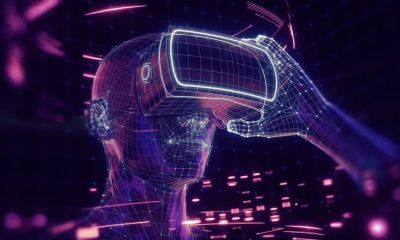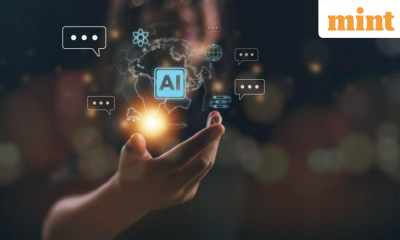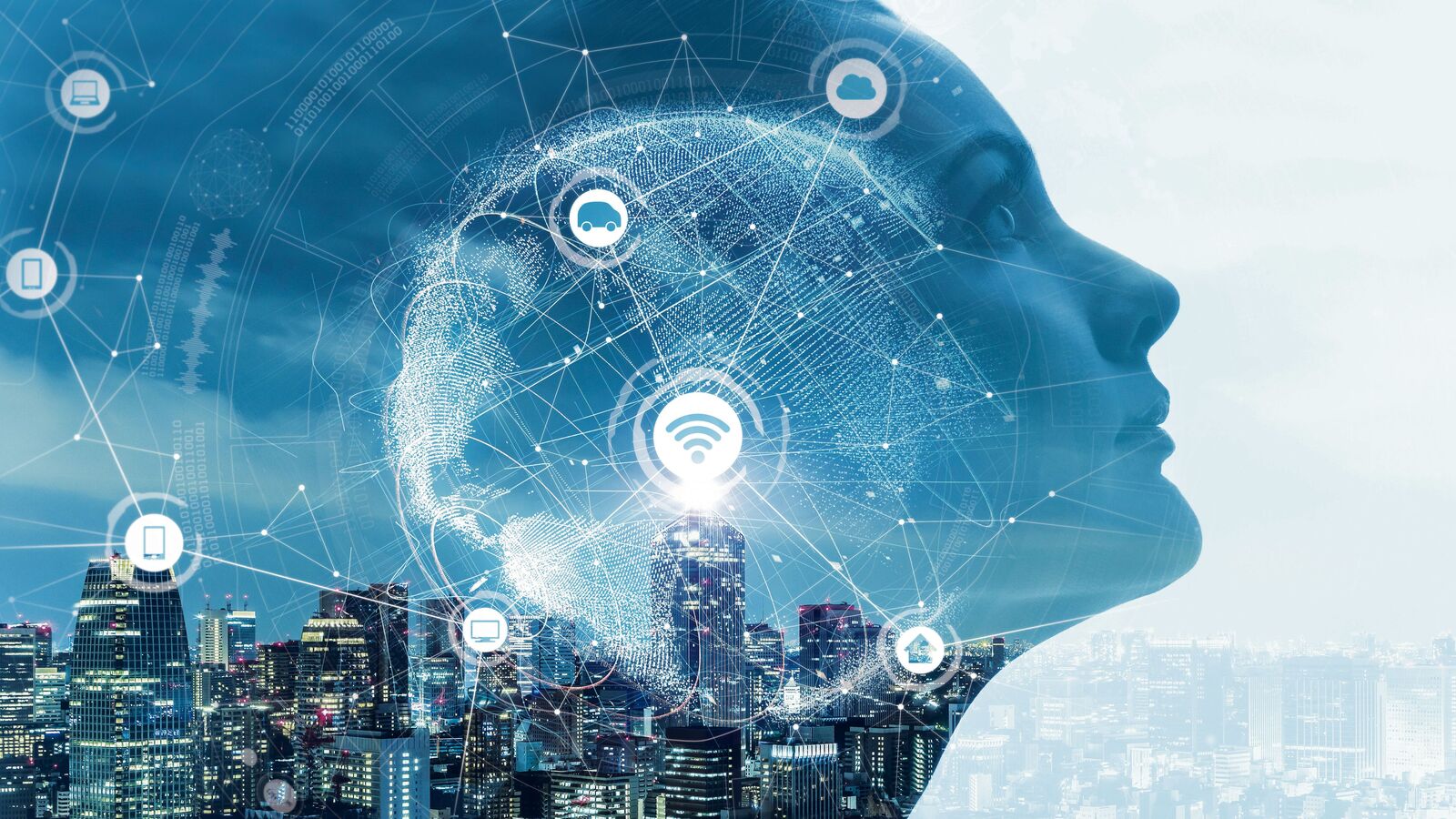
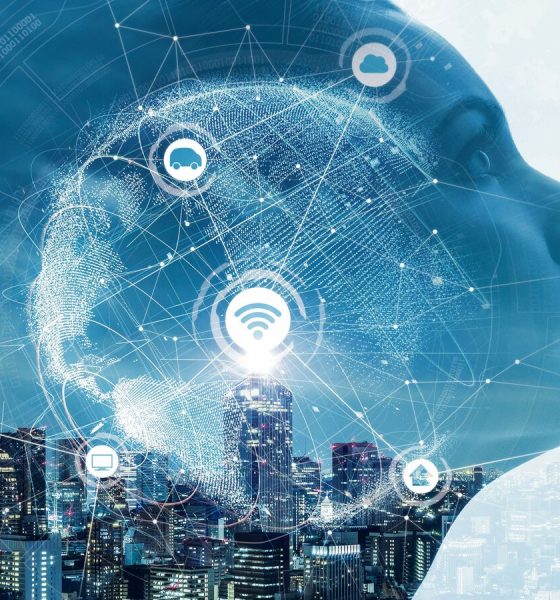
Metaverse
An agenda to maximise AI’s benefits and minimise harms, by David Patterson – Crypto News
This was the subject of a spirited conversation I had in February 2024 with Andy Konwinski, a former student of mine and the co-founder of two AI-related startups, Databricks and Perplexity. Andy shared his disbelief that a friend’s son had dropped out of his computer-science programme. This bright student believed AI would soon make programmers obsolete.
He isn’t alone: according to Gallup, three-quarters of Americans say that AI will reduce the total number of jobs within ten years. It reminded me of a similarly promising student who, 20 years ago, abandoned computer science owing to his fear that offshoring meant virtually all programming jobs would shift to lower-income countries like India. His panic was misplaced: since 2000, both the number of jobs for programmers in America and their inflation-adjusted salaries grew by half.
Our conversation turned to shared frustration over the polarised discourse between AI “accelerationists” and “doomers”. The reality, we agreed, is more nuanced. We concluded that there is an urgent need for computer scientists to take a more active role in both steering research and shaping the narrative. Rather than simply predict what the impact of AI will be given a laissez-faire approach, our goal was to propose what the impact could be given directed efforts to maximise the upsides and minimise the downsides.
We then assembled nine of the world’s leading computer scientists and rising AI stars, from academia, startups and big tech, to explore the pragmatic near-term impact of AI. We also interviewed two dozen other experts about AI’s impact on their specialties, including John Jumper, a winner of this year’s Nobel prize in chemistry, on science; President Barack Obama on governance; his former UN ambassador and national security adviser Susan Rice on security; and Eric Schmidt, a philanthropist and Google’s former chief executive, on several topics. For those interested, we’ve compiled our learnings into a more detailed 30-page paper, entitled “Shaping AI’s Impact on Billions of Lives“.
Five guidelines emerged for harnessing AI for the public good. We believe they should guide our efforts in both the discovery and deployment of this transformative technology.
First, humans and AI systems working as a team do more than either on their own. Applications of AI focused on human productivity produce more positive benefits than those focused on human replacement. Tools that make people more productive increase their employability, satisfaction, and opportunity. People can act as safeguards if the AI veers off course in areas for which it is not well trained. In short, focussing on human productivity helps both people and AI succeed.
Second, to increase employment, aim for productivity improvements in fields that would create more jobs. Despite tremendous productivity gains in computing and passenger aviation, America in 2020 had 11 times more programmers and eight times more commercial-airline pilots than in 1970. This growth is because programming and air transport are fields for which, as economists say, demand is elastic. Agriculture, on the other hand, is relatively inelastic, so productivity gains meant the number of agriculture jobs fell by three-fourths in one human lifetime (1940 to 2020). If AI practitioners aim to improve productivity in elastic fields, despite public fears, AI can actually increase employment.
Third, AI systems should initially aim at removing the drudgery from current tasks. Releasing time for more valuable work will encourage people to use new AI tools. Doctors and nurses choose their careers because they want to help patients, not do endless documentation. Schoolteachers prefer teaching, not grading and record-keeping. High priority should be given to AI tools that are going to improve the meaningfulness of people’s current work in hospitals and classrooms.
Fourth, the impact of AI varies by geography. Eric Schmidt emphasises that while rich countries worry about AI displacing highly trained professionals, countries with lean economies face shortages of skilled experts. AI could make such expertise more widely available in such regions, potentially enhancing quality of life and economic growth, becoming as transformative there as mobile phones have become. For example, an AI system that improved the skills and productivity of nurses and physician assistants would also give more patients access to high-quality health care in regions that are short of doctors. The increasing popularity of smartphones in low- and middle-income countries enables widespread access to multilingual AI models that can dramatically help people in low- and middle-income countries to get access to information, education, media/entertainment, and more in their native languages if desired. Improvements to local economies and critical services may even provide alternatives to emigration for some in middle income countries.
And finally, we need better metrics and methods to evaluate AI innovations. At times the marketplace can do this, such as for AI tools for professional programmers. In high-stakes domains it cannot, because we cannot risk harming participants. We need to use gold-standard tools: A/B testing, randomised controlled trials, and natural experiments. Equally urgent is post-deployment monitoring to evaluate whether AI innovations do what they say they are doing, whether they are safe, and whether they have externalities. We also need to continuously measure AI systems in the field so as to be able to incrementally improve them.
There is no shortage of concerns about the risks and complexities of AI, which we address in the long paper: data privacy and security, intellectual-property rights, bias, information accuracy, threats to humanity from more advanced AI, and energy consumption (though on this last point, AI accounts for under a quarter of 1% of global electricity use, and the International Energy Agency considers AI’s projected increased energy consumption for 2030 to be modest relative to other trends).
Although there are risks, there are also many opportunities both known and unknown. It can be as big a mistake to ignore the benefits of AI as it is to ignore its risks. AI moves quickly, and governments must keep pace. Similar to how the government collaborated with industry in the successful development and deployment of chips and cars, we propose a coordinated public-private partnership for AI. Its goal would be to remove bureaucratic roadblocks, ensure safety and provide transparency and education to policymakers and the public.
At this point, readers might expect that we scientists are about to ask for government funding. But we believe that money for these efforts should come from the philanthropy of the technologists who have prospered in the computer industry. Several have already pledged support, and we expect more to join. We think these commitments should be deployed in two ways: to create major inducement prizes to stimulate research and recognise breakthroughs, and to fund ad hoc three- to five-year multidisciplinary research centres.
We brainstormed on an AI moonshot. But which goal? We might create an AI mediator that orchestrates conversations across political chasms to pull us out of polarisation and back into pluralism. We can leverage the growing prevalence of smartphones by aiming to create a tutor app for every child in the world in their language, for their culture, and in their best learning style. We might enable biologists and neuroscientists to make a century of progress in a single decade. But if we create the right blueprint for innovation, and bring experts and users together into the conversation, we don’t have to pick just one moon.
David Patterson is the Pardee Professor of Computer Science, Emeritus at the University of California at Berkeley and a Distinguished Engineer at Google.
© 2025, The Economist Newspaper Limited. All rights reserved. From The Economist, published under licence. The original content can be found on www.economist.com
-
Technology5 days ago
Crypto Lawyer Bill Morgan Praises Ripple’s Multi-Chain Strategy as RLUSD Hits $1.1B – Crypto News
-

 Cryptocurrency6 days ago
Cryptocurrency6 days agoIlluminating progress: Is a $140K income ‘poor’? – Crypto News
-

 others5 days ago
others5 days agoGold holds strong at $4,200 as Fed-cut anticipation builds – Crypto News
-

 Blockchain4 days ago
Blockchain4 days agoAnalyst Reveals What You Should Look Out For – Crypto News
-
Cryptocurrency1 week ago
Crypto Platform Polymarket Relaunches in U.S. Following CFTC Approval – Crypto News
-
others7 days ago
Bitcoin Price Forecast as BlackRock Sends $125M in BTC to Coinbase — Is a Crash Inevitable? – Crypto News
-
others1 week ago
$12T Charles Schwab to Launch Bitcoin and Ethereum Trading in Early 2026, CEO Confirms – Crypto News
-
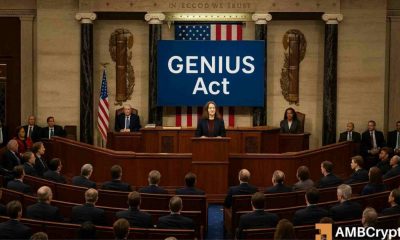
 Cryptocurrency1 week ago
Cryptocurrency1 week ago‘Get it done on time’ – Lawmakers push regulators on GENIUS Act rollout – Crypto News
-
Business1 week ago
Crypto Platform Polymarket Relaunches in U.S. Following CFTC Approval – Crypto News
-

 Cryptocurrency1 week ago
Cryptocurrency1 week agoUK recognises crypto as property in major digital asset shift – Crypto News
-
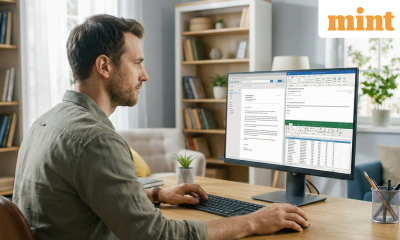
 Technology6 days ago
Technology6 days agoWorking on a screen all day? These 8 LED monitors in Dec 2025 are kinder on your eyes – Crypto News
-

 Technology6 days ago
Technology6 days agoSamsung Galaxy S25 Ultra 5G for under ₹80,000 on Flipkart? Here’s how the deal works – Crypto News
-
others6 days ago
Morgan Stanley Turns Bullish, Says Fed Will Cut Rates by 25bps This Month – Crypto News
-

 Cryptocurrency6 days ago
Cryptocurrency6 days agoFlorida Appeals Court Revives $80M Bitcoin Theft – Crypto News
-
others4 days ago
Breaking: Labor Department Cancels October PPI Inflation Report Ahead of FOMC Meeting – Crypto News
-
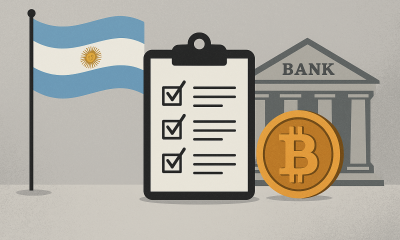
 Cryptocurrency4 days ago
Cryptocurrency4 days agoArgentina moves to reshape crypto rules as banks prepare for Bitcoin services – Crypto News
-

 Blockchain3 days ago
Blockchain3 days agoStripe and Paradigm Open Tempo Blockchain Project to Public – Crypto News
-
others1 week ago
Strategy CEO Says Bitcoin Sales Unlikely Before 2029 After Creating $1.44B Dividend Reserves – Crypto News
-
Business1 week ago
Sui Price Surges 10% As Vanguard Group Adds SUI to Bitwise 10 Crypto Index – Crypto News
-
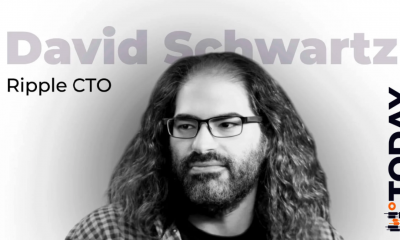
 Cryptocurrency1 week ago
Cryptocurrency1 week agoRipple CTO Shares Hilarious Email from Jed McCaleb Impersonator – Crypto News
-
Business1 week ago
Senator Tim Scott Floats December 17 and 18 For Crypto Market Bill Markup – Crypto News
-

 Cryptocurrency1 week ago
Cryptocurrency1 week agoBTC staking platform Babylon teams up with Aave for Bitcoin-backed DeFi insurance – Crypto News
-

 Blockchain1 week ago
Blockchain1 week agoSolana (SOL) Cools Off After Rally While Market Eyes a Resistance Break – Crypto News
-

 others6 days ago
others6 days agoThe rally to 7120 continues – Crypto News
-

 Cryptocurrency5 days ago
Cryptocurrency5 days agoCrypto Holiday Gift Guide 2025 – Crypto News
-

 others5 days ago
others5 days agoNasdaq futures hold key structure as price compresses toward major resistance zones – Crypto News
-

 others5 days ago
others5 days agoNasdaq futures hold key structure as price compresses toward major resistance zones – Crypto News
-

 Cryptocurrency1 week ago
Cryptocurrency1 week agoSHIB Exec Calls FBI, RCMP and Interpol to Action on Surging Cyber Attacks – Crypto News
-

 Metaverse1 week ago
Metaverse1 week agoIs ChatGPT working again? OpenAI’s latest update as users report outages – Crypto News
-
Business1 week ago
Trump Sets Early 2026 Timeline for New Fed Chair Pick – Crypto News
-

 Cryptocurrency1 week ago
Cryptocurrency1 week agoVanguard reverses course, opens door to Bitcoin, Ethereum, XRP, and Solana ETFs – Crypto News
-
others1 week ago
XRP News: Ripple Expands Payments Service With RedotPay Integration – Crypto News
-

 Blockchain1 week ago
Blockchain1 week agoLedger Finds Chip Flaw Allowing Complete Phone Takeover – Crypto News
-
Business1 week ago
Kalshi, Robinhood and Crypto com Face Cease & Desist Order in Connecticut – Crypto News
-
Business1 week ago
What’s Next for Dogecoin Price After Whales Scoop 480M DOGE? – Crypto News
-

 Technology7 days ago
Technology7 days agoCloudflare Resolved Services Issues Caused by Software Update – Crypto News
-
others7 days ago
XRP Price Prediction As Spot ETF Inflows Near $1 Billion: What’s Next? – Crypto News
-
Technology6 days ago
Solana Price Outlook: Reversal at Key Support Could Lead to $150 Target – Crypto News
-

 Technology6 days ago
Technology6 days agoFrom security camera to gaming hub: 6 Easy tricks to make your old smartphone genuinely useful again – Crypto News
-

 Blockchain5 days ago
Blockchain5 days agoBitcoin Buries The Tulip Myth After 17 Years: Balchunas – Crypto News
-

 Cryptocurrency5 days ago
Cryptocurrency5 days agoWhy Ethereum strengthens despite whale selling – Inside Asia premium twist – Crypto News
-

 Technology4 days ago
Technology4 days agoStarlink India pricing revealed: How much does monthly plan cost and what are its benefits? – Crypto News
-
Business1 week ago
Kraken to Acquire Backed Finance, Expanding Tokenized Equities Ahead of 2026 IPO – Crypto News
-
Business1 week ago
Litecoin Price Jumps 10% as Vanguard Opens LTCC Access — How High Can LTC Go? – Crypto News
-
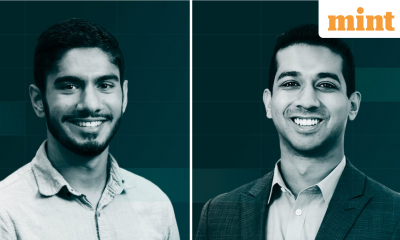
 Technology1 week ago
Technology1 week agoMeet the Indian-origin AI founders dominating Forbes’ latest 30 Under 30 list – Crypto News
-
Cryptocurrency1 week ago
Hedera Price Surges 10% After Canary Capital HBAR ETF Goes Live on Vanguard – Crypto News
-

 Blockchain1 week ago
Blockchain1 week agoLeveraged ETFs Tied To Strategy Suffer Major Losses – Crypto News
-
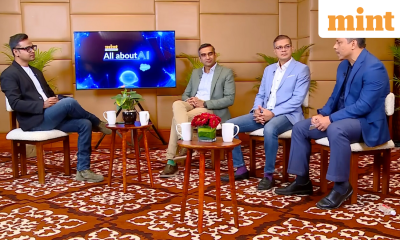
 Metaverse1 week ago
Metaverse1 week agoIndian enterprises all-set to take an AI leap as partners guide adoption – Crypto News
-
Business1 week ago
December Fed Rate Cut Prospects Strengthen After ADP Shows Deepening Labor Market Weakness – Crypto News
-
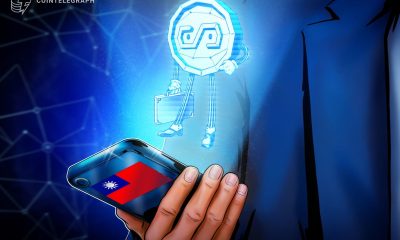
 Blockchain1 week ago
Blockchain1 week agoTaiwan to Pass Stablecoin Regulations in Late 2026: Report – Crypto News



